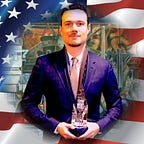To Demystify “STEM”, First Add a Word to It
Broadening Understanding Through Prudent Addition
Written by: Andrew B. Raupp / @stemceo
Author’s Note: Throughout my research and writing endeavors, a core objective has always been to sift through vast data sets, distilling complex information into comprehensible, actionable insights. This piece on STEM and STEM Education is no exception. By breaking down the complexities, my hope is to provide you with a clearer understanding, enabling more informed conversations and decisions in the evolving world of “STEM”. Your feedback and insights are always welcome as we continue this journey of discovery together.
The Ambiguity of “STEM”
In the contemporary landscape where technology and human ambition intersect, STEM literacy stands out as the torchbearer for our collective future. Science, Technology, Engineering, and Mathematics — known collectively by the succinct acronym STEM — undeniably form the pillars of modern-day progress. But herein lies a twist. While STEM serves as a beacon, its widespread usage sometimes contributes to ambiguity, diluting its core essence.
A comprehensive study undertaken by STEM.org Educational Research, built upon thousands of interviews across diverse stakeholders, brings this ambiguity to light. Despite STEM’s intent to streamline understanding, it often presents itself as a monolithic term. Absent universal clarity, interpretations vary, leading to mixed messaging and occasionally, confusion.
Refining the Narrative: Examples in Context
So, how do we navigate this challenge? The answer seems elegantly simple: Add a word to it. This isn’t about complicating the term but refining it for precision.
“STEM acronym.” This underscores that we are dealing with a condensed representation, a shorthand for these broader fields.
“STEM subjects.” We are transported to academia, pinpointing specific topics under the vast STEM canopy.
“STEM education.” Instantly, we see academic institutions, curriculums, and classrooms with a focus on these four disciplines.
“STEM education movement.” It shines a light on the global initiative emphasizing these disciplines in curriculums across the globe.
“STEM field.” The discourse broadens, covering sectors and industries heavily reliant on these crucial disciplines.
“STEM career.” Here, we delve into the professional world, with roles that span from data scientists to aerospace engineers.
“STEM toy.” This brings to the forefront educational products designed to nurture understanding and interest in the four core disciplines among younger minds.
Interpreting Questions: Creating Teachable Moments
But why does this nuance matter so profoundly? As STEM.org discovered during its study, linguistic precision holds paramount importance in establishing community trust and positioning oneself as a STEM leader. When the team listened to people discuss STEM and subsequently interviewed them about their perceptions, the findings were revealing. Perceptions varied widely. The term “STEM” has remained relatively consistent over the past three decades, with occasional modifications like the addition of an “A” for arts. The primary point of contention, however, lies in distinguishing between STEM as the subjects and STEM education.
An important perspective to consider is how we respond when posed with the query, “What is STEM?” The correct response is not to directly answer it. That might sound counterintuitive, but it’s rooted in the understanding that such a question is too vague. Instead, it becomes pivotal to ask the inquirer what specific clarification they seek. For instance: “When you ask ‘What is STEM?’, are you inquiring about what the acronym stands for? Do you desire a definition of STEM education?” Such a follow-up question not only creates a teachable moment but also gives the respondent time to gather their thoughts. More importantly, it positions the responder as someone with a nuanced, deep understanding of “STEM”.
Bridging Clarity and Communication
While acronyms streamline communication, specificity sometimes becomes the casualty. By adding a clarifying word to STEM, discussions can become more productive, objectives clearer, and intentions better understood. It’s an era for a sharper narrative, where “STEM” isn’t a mere catch-all term but a vivid, focused signal of purpose. This linguistic clarity can inch the global community closer to the widespread STEM literacy that is our shared ambition.
Final Thoughts
As we tread the path of technological and scientific advancements, precision in communication becomes crucial. To build trust, foster understanding, and champion STEM literacy, let’s ensure our vocabulary is as exact as the science and technologies we discuss.
Andrew B. Raupp is the Founder / Executive Director @stemdotorg. “Democratizing science, technology, engineering and math (STEM) education through sound policy & practice…”
